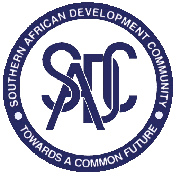
Following the Asia-African gathering in Indonesia, the Southern African Development Community (Sadc) council of ministers and heads of states last week gathered in Harare for an extraordinary meeting “to review the progress made with the process of developing the Sadc Strategy and Road Map”.
The gathering came under the shadow of xenophobic attacks in South Africa. Jacob Zuma briefed the meeting on the attacks. The summit “condemned” the attacks but “commended” the action taken by the SA government and “resolved” to work together to prevent a similar occurrence in the future. Such attacks should not be tolerated under any circumstance. Regional integration would also be jeopardised if xenophobic tendencies are tolerated.
The summit considered and approved the Sadc industrialisation strategy and road map. According to the summit papers, the strategy is anchored on three pillars, namely industrialisation as a champion of economic and technological transformation, competitiveness as an active process to move from comparative advantage to competitive edges, and regional integration and geography as the context for industrial development and economic prosperity.
This is a follow-up meeting to the Victoria Falls meeting held in August 2014, a meeting which resolved to discourage the export of primary goods but encourage industrialisation within the region to ensure than the grouping extracts maximum value from its resources.
Main intra-Sadc trade export items include oil and gas, agricultural products, electricity and some clothing and textile products. Main export items to the rest of the world consist of predominantly export of resources such as coal, ferrochromium, manganese ores, platinum, gold and diamonds, resource intensive manufactured goods, mainly for the automotive industry, and agricultural products mainly tobacco. Sadc statistics show that the highest share of total Sadc exports over time is to the Asia Pacific Market, followed by the EU market. Trade within Africa is the smallest and of this, the majority is intra-Sadc trade. Sadc imports also show a similar trend with a majority of goods coming from Asia Pacific market, followed by the EU, rest of Africa. Sadc’s imports from the rest of Africa are only a small component of the total imports.
Sadc is a regional economic bloc comprising 15-member states within southern Africa. Originally established as a development co-ordinating conference (Sadcc), Sadc was transformed into its current format of being a development community in 1992. The bloc is focused on regional integration and poverty eradication through economic development and ensuring peace and stability within southern Africa. With rotational chairmanship, Sadc’s current chair position is held by Zimbabwe. Through its original Regional Indicative Strategic Development Plan (RISDP), a 15-year (2005-2015) framework for regional integration, Sadc outlined the key milestones to assist in measuring the progress towards regional integration. The RISDP time frame shows that Sadc aims to achieve a common market by agreeing common policies on production regulation area in 2015, monetary union through macro-economic convergence by 2016, a single currency and becoming an economic union by 2018.
While the Sadc Free Trade Area was achieved in August 2008, maximum tariff liberalisation was only attained by January 2012, when the tariff phase down process for sensitive products was completed. The proposed transition from the Sadc Free Trade Area to a Sadc Customs Union faces a number of challenges, the key one being the complication arising from the need to converge the different individual tariff policies into a single and uniform tariff regime.
The summit also explored and approved the revised RISDP, a blueprint that will guide the implementation of the Sadc programmes between 2015 and 2020, prioritising industrial development and market integration, infrastructure development, peace and security co-operation.
- Chamisa under fire over US$120K donation
- Mavhunga puts DeMbare into Chibuku quarterfinals
- Pension funds bet on Cabora Bassa oilfields
- Councils defy govt fire tender directive
Keep Reading
So key is the industrialisation theme that it will be front-loaded within the revised and reviewed RISDP ahead of the integration programme. The gathering directed that the industrialisation strategy be given top priority in the implementation of the Revised RISDP. The idea is to ensure that countries within the bloc achieve some levels of parity in terms of industrialisation as well as to ensure that the region transition to own beneficiation and processing, and then extract full benefits from exporting processed and manufactured goods. The industrialisation strategy is a long term plan covering the period between 2015 and 2063 and is aligned to the Continental Agenda 2063, a continental strategy whose aim is to optimise the use of Africa’s resources for the benefit of all Africans.
As indicated in this column last week, Africa is rich with natural resources but lags behind in infrastructure and industrial development to fully benefit from these abundant natural resources. Africa has 60% of the world’s arable land. Thirty percent of the world’s oil and gas discoveries over the past five years were in sub-Saharan Africa. South Africa and Zimbabwe hold together the world’s largest platinum reserves. Infrastructure development in Africa is the key that will unlock economic and industrial development. The need for infrastructure development creates huge investment opportunities for both the private and public sector — opportunities for public-private partnerships (PPPs), infrastructure funds and fund managers (such as pension funds) looking for long term assets to match their long term liabilities.
l Nesbert Ruwo (CFA) and Jotham Makarudze (CFA) are investment professionals based in South Africa. They can be contacted on [email protected]











